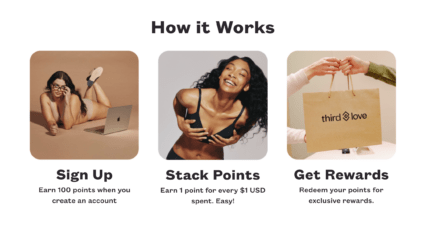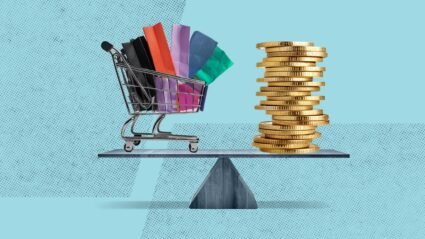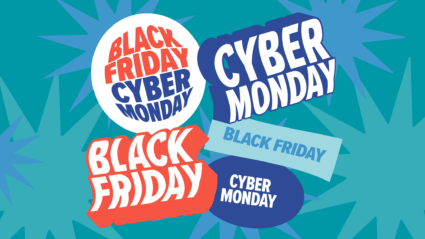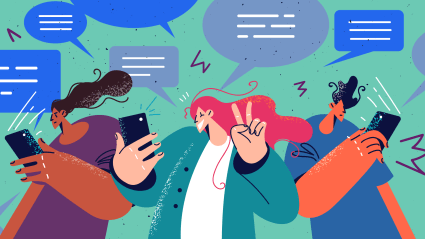Customer acquisition costs are climbing—and that’s just the tip of the iceberg.
Marketers today are navigating a minefield of shifting privacy regulations, unpredictable tariff impacts, and a customer journey that’s more fragmented than ever. The pressure to drive growth with fewer resources is real.
In a world where marketers are being pushed to do more with less, it’s easy to equate profitability with efficiency. But that’s a mistake.
The brands winning today aren’t fixated on CAC vs. LTV. They’re playing the long game: maximizing customer lifetime value (LTV) while minimizing customer acquisition cost. Let’s talk about how they’re doing it—and how you can, too.
Why marketers are seeing higher customer acquisition cost
As a quick refresher for anyone lost in the alphabet soup of marketing acronyms: A low CAC means your marketing is efficient, while a high CAC means you’re spending more on acquiring new customers. Customer lifetime value (LTV), on the other hand, is the total revenue a customer generates over their relationship with your brand.
Strategist POV:
“CAC is a valuable signal—but it’s not a strategy. If your entire plan revolves around lowering CAC, you’re not building a brand. You’re just chasing cheaper clicks. The smarter move is to invest in experiences that increase LTV and earn loyalty. That’s one way brandformance delivers real, sustainable growth.
Increase customer lifetime value: the “other” route to high marketing ROI
It stands to reason that one of the most effective ways to increase your LTV:CAC ratio is by tapping into your most valuable asset: your existing customers. If you can motivate your audience to keep coming back and/or spend more each visit, you’re poised to win.
CAC vs. LTV
In other words, if your CAC rises from $20 to $25, but your average customer lifetime spend jumps from $100 to $200, you’re printing money (all else being equal, of course!).
Lean into your existing audience to increase returns from the people who already know your brand (and hopefully love your products and services). That’s not to say you should stop trying to reach new audiences, but make sure you’re investing in retention that will pay dividends as you continue to expand your audience.
The goal should never be to draw a new one-time buyer, but to build customer relationships that last a lifetime–or at least a few online purchase cycles.
Not convinced? Here are four great reasons to step up your focus on retention and loyalty:
- Bang for your buck: Reacquiring and retaining your existing audience is often cheaper than engaging with new customers
- High stakes: Upselling or cross-selling products to current customers can drive superior returns
- An inside job: With returning customers, you already have a track record of their buying behavior and preferences to inform your strategy
- Buzz-worthy: Satisfied existing customers can influence friends or family with word-of-mouth recommendations
Admittedly, it’s also getting harder to retain current customers as many consumers are shopping around for deals: 59% of customers will switch products for a cheaper option, and nearly one in five consumers say they can’t afford to be loyal anymore, according to eMarketer.
So, how can you unlock more value from your existing customers and keep them loyal, even as competition and consumer expectations rise?
How to improve LTV
To retain those all-important existing customers and make them worthy of your acquisition costs, you need to understand who your current customers are and what truly matters to them.
Prioritize higher-value customers
Not all customers are created equal: To make the most of your audience, you need to determine which shoppers are the most valuable and focus the bulk of your efforts on them.
Segment customers by profitability, from high-LTV customers who make frequent/large purchases to low-LTV customers who only buy sometimes and/or spend less.
You can then prioritize your ad spend based on the relative value of those audiences to ensure the highest return on investment.
Reward loyalty with special offers
Customers are more likely to come back to your brand when they feel they’re getting something in return for their love. Loyalty programs are a great way to build relationships with customers and offer rewards to your most valuable audiences.
The best program for your brand will depend on your industry and your brand’s personality, but many businesses offer points, cash back, free swag, or discounts. You can even encourage word-of-mouth by giving discounts for customer referrals.

Source: thirdlove
Focus on customer retention strategies
Beyond financial perks, you can gain loyalty by making your customers feel like they’re a part of something.
Find out what’s important to your specific customers through social listening, reading reviews, and asking for feedback, then make sure you address their concerns, hopes, and dreams. Engage with users on your social media profiles and respond to comments so your audience feels heard.
You can also make people feel special with personalized messaging. Let your customers know that you remember and value them by providing tailored product recommendations, sending email and SMS messages specifically about their purchase history or needs, and sharing anniversary or birthday offers.
LTV isn’t just a metric—it’s a mindset.







Responses